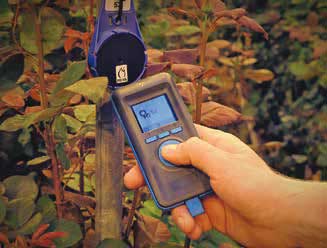
Labour costs are often 20 – 30 percent of the total cost of production in horticultural businesses, if not higher. What’s more, labour costs continue to increase in Australia so growers now face some of the highest labour costs of any horticultural operation in the world.
The amount of contract labour, seasonal workers and casual workers has also increased significantly in the past decade, so there is more reliance on labour from other countries, for whom English is a second language.
To ensure your growing business remains competitive, your insight into your employees’ efficiency has become more essential than ever, as is keeping your employees motivated.
Being able to accurately track production, compare the performance of different crops and varieties, and benchmark the various activities that are necessary in your operation are all essential to fine tuning your operation with a direct analysis and result in the returns in your business.
Besides, growers would also ideally be able to forecast the horticultural production area based on labour planning.
Traceability of Food
Traceability of food is also becoming more and more important. Aligning quality and delivery time at every link of the supply chain will result in profits. There is an increasing need for integration of these links in the channel and more reliable supply information.
The continuity of your business depends on strategic choices and the performance of your processes.
It is clear that efficient labour management is not essential just to large corporations, but to all sizes of horticultural businesses, small to large.
Labour Registration
Before improvements can be made in labour management, it is important to first be able to accurately measure the activities and production in your operation.
To this end there are a number of possibilities that have been developed over the years.
Early systems relied on registration via a key-pad either hard-wired to a computer or wireless. While this type of input is very flexible, it does have the disadvantage that it relies on labour that is able to interpret codes and read proficiently. It is also more prone to entry errors. These errors will later need to be corrected by the system administrator, a process that takes extra time.
Save Time
More recent systems use Radio-frequency identification (RFID) tags and wireless “readers” carried by employees to “scan” the tags.
Tags are used to represent employees, activities, locations, pests and diseases, etc. and can be labelled with letters, numbers or pictures.
These systems have many advantages as the tags are very robust and can be “scanned” even when dirty and/or covered with plant material such as leaves, there is little reliance on language or codes, keying errors are eliminated dramatically reducing the need for error checking.
One such system is Priva’s FS Performance, which is in use in a large number of operations worldwide, including a number of companies in Australia and New Zealand.
Production Registration
To register production, many systems can be integrated with a packing facility to count or weigh buckets, boxes and / or bunches. The systems can then automatically link the production to the picker and row and time. This way the system will provide information such as bunches/kilos per hour, per square metre, production per person, etc.
 The systems include the ability to pay by piece rate, and/or have piece rate as a bonus when employees perform above the average.
The systems include the ability to pay by piece rate, and/or have piece rate as a bonus when employees perform above the average.
This has the benefit to encourage employees to work faster and harder, while also reducing the number of employees and / or hours needed by the employer.
Quality Registration
Of course, working faster does not always mean that the work is better, so current systems include the ability to register quality of activities carried out by the employee. In FS Performance, quality is registered via a smartphone App so the result can be used to influence the bonus paid.
Other apps can include pest and disease registration and crop registration.
Through crop registration and with a labour planning module, the manager can plan and review the required labour for the week thus further improving labour use efficiency.
With the option of a large information display, usually mounted in or close to the staff room, the manager can display pertinent data back to staff including: labour plan for the day, results of various activities such as picking, any pest or disease issues to watch out for in the crop, and even news and social events.
Data Analysis
Naturally, collecting the data accurately is only the first part of the decision making process.
The business manager and /or owner then needs to be able to very easily analyse this data to help make important decisions.
To this end there are very easy to use configurable dashboards, flexible reporting functions, and analysis tools available to the grower.
Labour Insight
While FS Performance is ideal in protected cropping, for field cropping Priva have developed other systems including Labour Insight. This web and app based “bring your own device” service is setup online by the grower via a web portal. Registration of activities and production are carried out via an app on the grower’s own Windows tablet or iOS iPad.
Priva offer a 3 month free trial of this system.
The grower simply has to register online to start the trial.
www.priva.com
